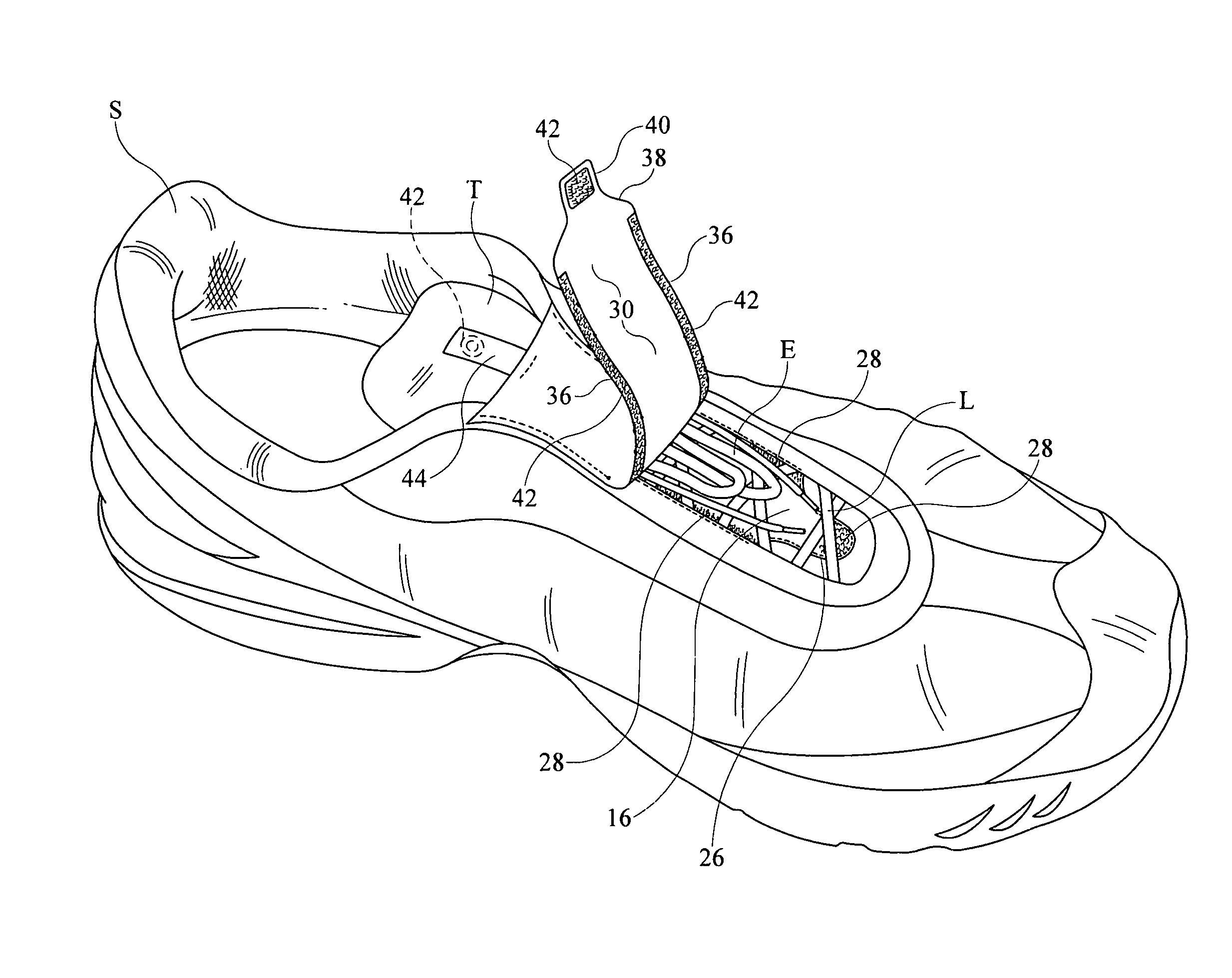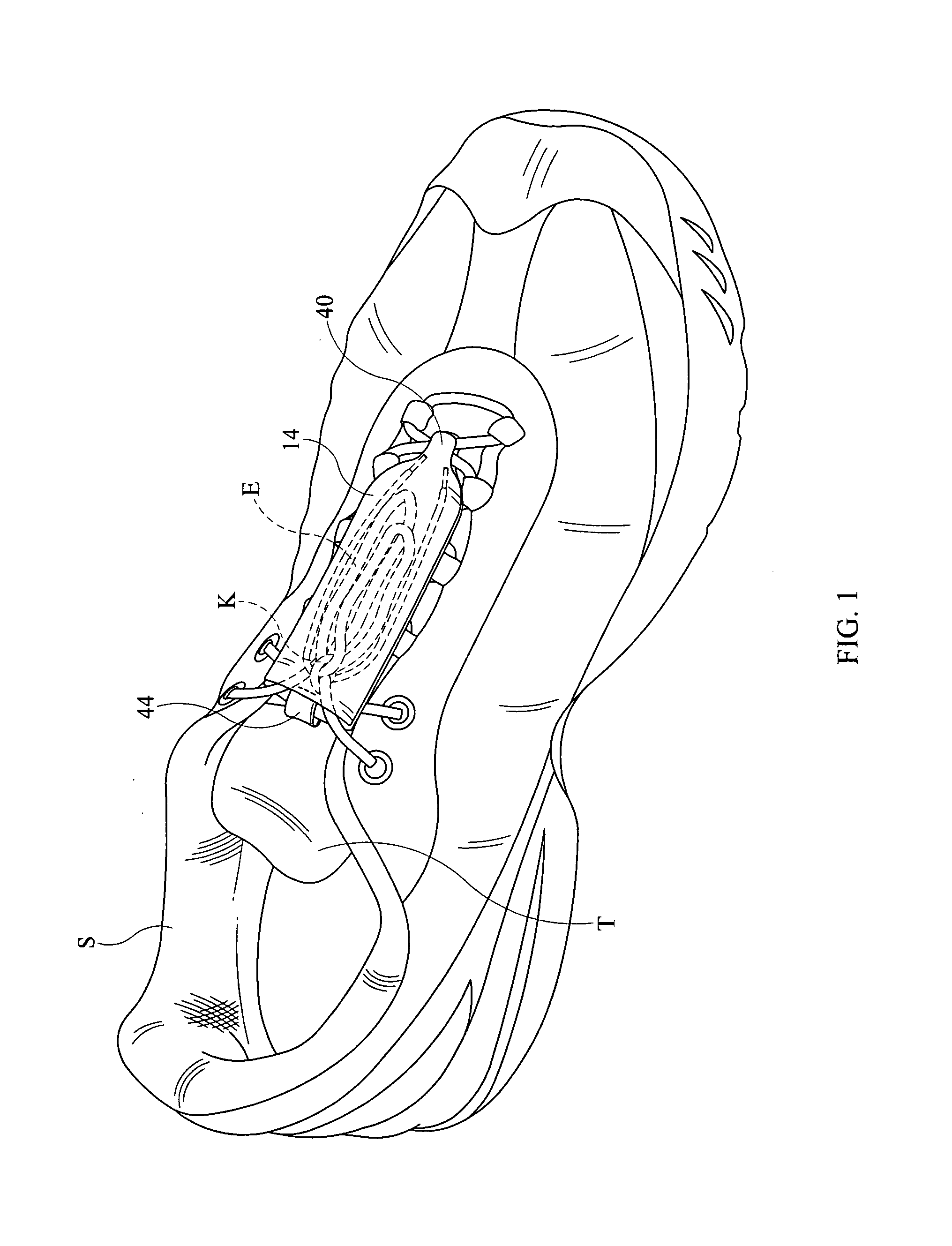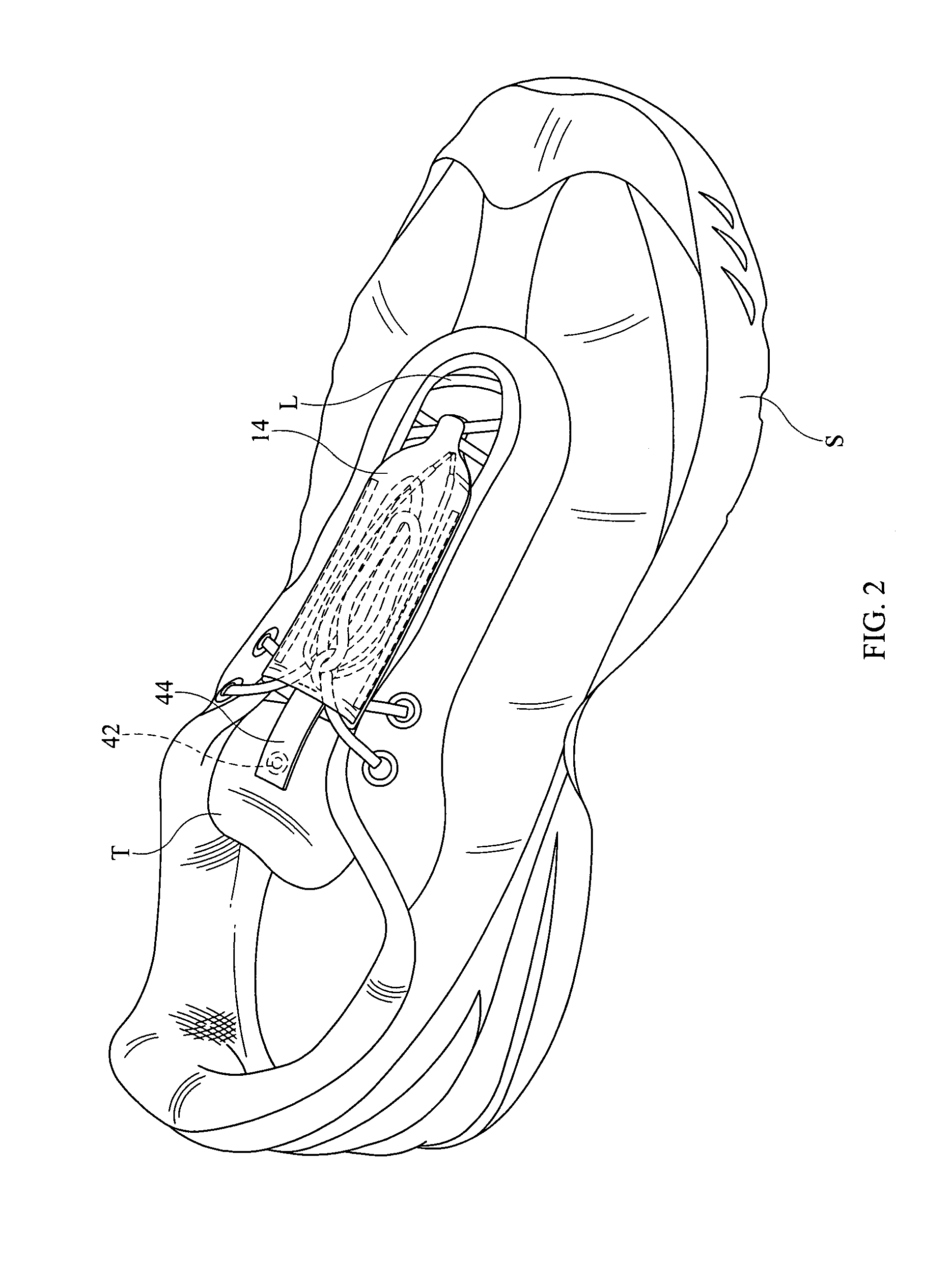Shoe lace cover
a lace cover and shoe technology, applied in the field of shoe lace cover, can solve the problems of untimely untying of shoes, untied knots, and a large problem of shoes, and achieve the effects of convenient removal, simple design and construction, and low production cos
- Summary
- Abstract
- Description
- Claims
- Application Information
AI Technical Summary
Benefits of technology
Problems solved by technology
Method used
Image
Examples
Embodiment Construction
[0016]Referring now to the drawings, it is seen that the shoe lace cover of the present invention, generally denoted by reference numeral 10, is comprised of a lower panel 12 and an upper panel 14.
[0017]As seen, the lower panel 12 has an inner surface 16 and an outer surface 18 and has a top 20, a pair of sides 22 and a bottom 24 with a tail 26 extending from bottom 24 such that the two sides 22 each curve inwardly toward the tail 26. A portion 28 of cooperating hook and loop material (including the new hook and dart material) extends along each side 22 of the lower panel 12 on the inner surface 16 thereof and a portion 28 is also located on the inner surface 16 on the tail 26 and on the outer surface 18 of the lower panel 12 just below the top 20.
[0018]As also seen, the upper panel 14 is substantially similar in size and shape to the lower panel 14 and also has an inner surface 30 and an outer surface 32 and has a top 34, a pair of sides 36 and a bottom 38 with a tail 40 extending ...
PUM
 Login to View More
Login to View More Abstract
Description
Claims
Application Information
 Login to View More
Login to View More - R&D
- Intellectual Property
- Life Sciences
- Materials
- Tech Scout
- Unparalleled Data Quality
- Higher Quality Content
- 60% Fewer Hallucinations
Browse by: Latest US Patents, China's latest patents, Technical Efficacy Thesaurus, Application Domain, Technology Topic, Popular Technical Reports.
© 2025 PatSnap. All rights reserved.Legal|Privacy policy|Modern Slavery Act Transparency Statement|Sitemap|About US| Contact US: help@patsnap.com



